|
Studebaker Main Page
Studebaker Proving Ground
Studebaker South Bend Plant Photos
Studebaker
World War Two Vehicle Photos
Studebaker in World War One
Studebaker R-1820 Aircraft
Engines on the B-17 "Yankee Lady"
Studebaker World War Two Fort Wayne
Plant
Studebaker Pacific Corporation
The Studebaker Proving Ground During World War Two
South Bend, IN
1852-1963
Rest in Peace
This page updated 2-12-2015.
The former Studebaker
Proving Ground is located on 850 acres, eight miles west of South Bend, IN on Indiana
State Road 2, or Western Avenue. Built in 1926,
it was a contracted test
track for the US Army Ordnance Department during the last two years of
World War Two. Many non-Studebaker
military trucks and halftracks were tested at this location.
The US Army Ordnance
Department signed a contract with Studebaker on March 29, 1943, for the
use of the facility as a military vehicle testing ground. The US Army
Corps of Engineers immediately came in and converted the grounds for the
military testing which began on June 20,1943. As the war started
to wind down, the contract was terminated on June 30, 1945, and the
Proving Ground returned to Studebaker for civilian testing.
Bendix, another
company based in South Bend, took possession of the Proving Grounds on
June 1, 1966, after Studebaker went out of business. Not long
afterwards Bendix donated 175 acres of the original 850 acres to St.
Joseph County, which is now known as Bendix Woods. Today the
proving grounds are still in operation but owned by Bosch.
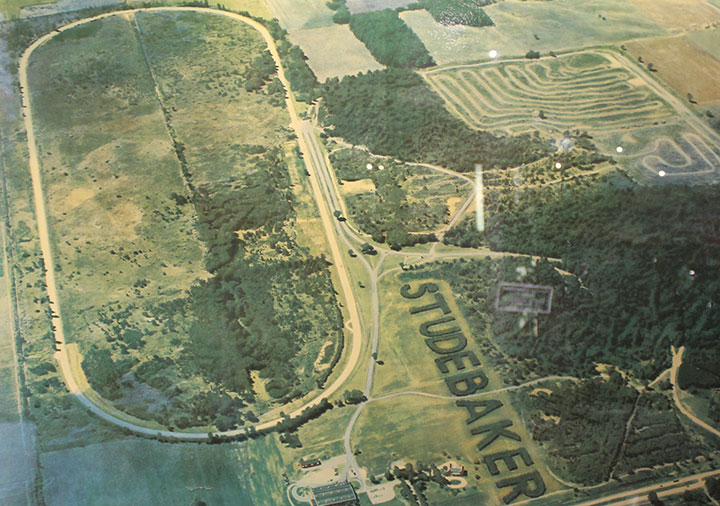
The Studebaker Proving Ground looking south,
southwest. At the center bottom are the garages, which are still
there and retain the "S" for Studebaker on them. Just to the right
is what is known as the Clubhouse. The "S-t-u-d-e-b-a-k-e-r" sign
was originally spelt out by 20,000 pine trees and was done in 1937 by
the Civilian Conservation Corps. Each letter is 250 feet tall and
the sign extends for a half a mile. The intent, when conceived in
1937, was to make it the world's largest sign. Today, if one looks
at a satellite photo of the Proving Ground, the tress still spell out
"Studebaker". SR 2 is at the bottom of the photo.
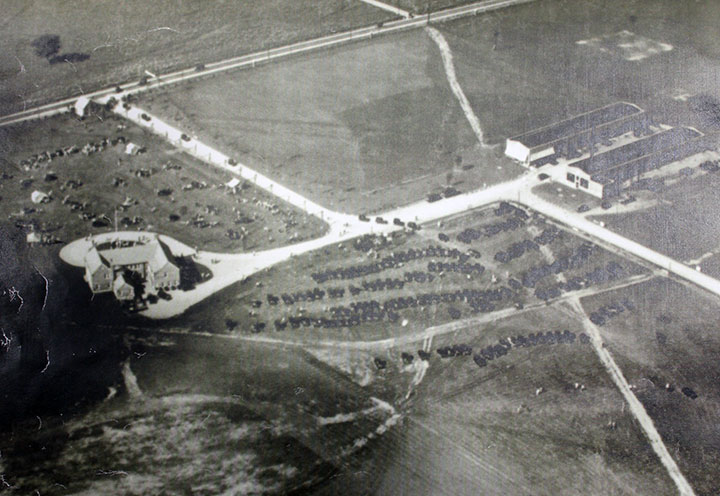
This early photo appears to be an open
house, with tents and cars parked on the grounds. In this case one
is looking northeast with SR 2 being at the top of the photo. The
garages are on the right and the clubhouse on the left.
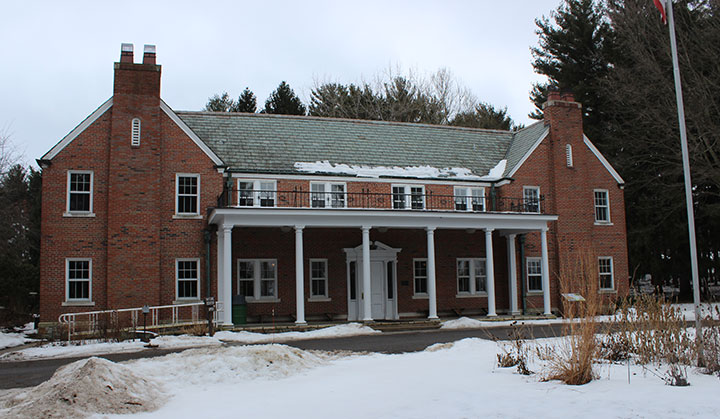
This is the Clubhouse today, looking south,
southwest. Behind the building are the trees that spell out
"Studebaker". The Clubhouse was originally built to house
employees of the Proving Ground that did not want to make the long trip
back to South Bend each evening after work, especially in the winter
when SR 2 was not plowed by the state highway department. In
reality, the employees made the trip, and the clubhouse was under-utilized for its original purpose. Author's photo.
During World War Two, the
Clubhouse served as a barracks for the US Army officers who were
stationed at the Proving Ground. Today the building is a Nature
Center for the park and is open to the public.
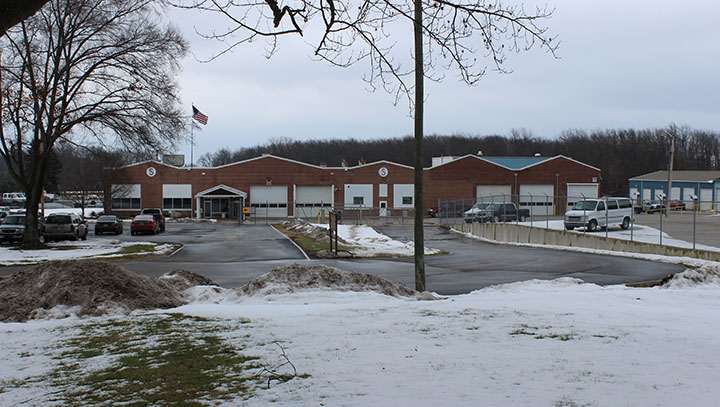
This view is looking east through an opening in the fence
that divides the park and the Proving Ground. One can see the garages
Studebaker built with the "S" for Studebaker on them. Author's photo.
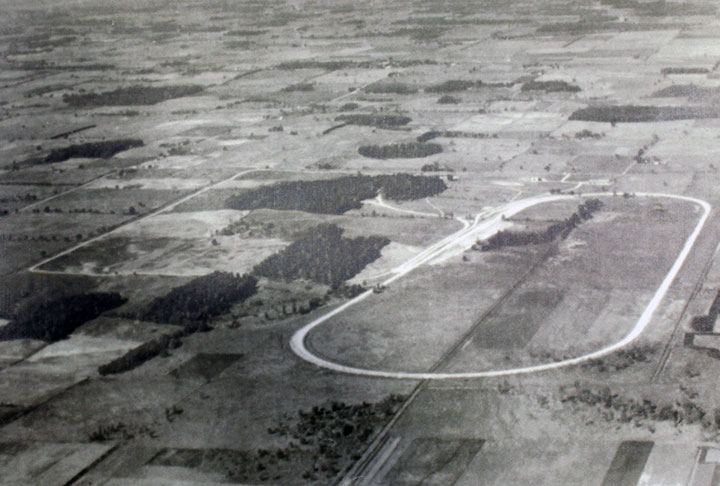
Looking northwest.
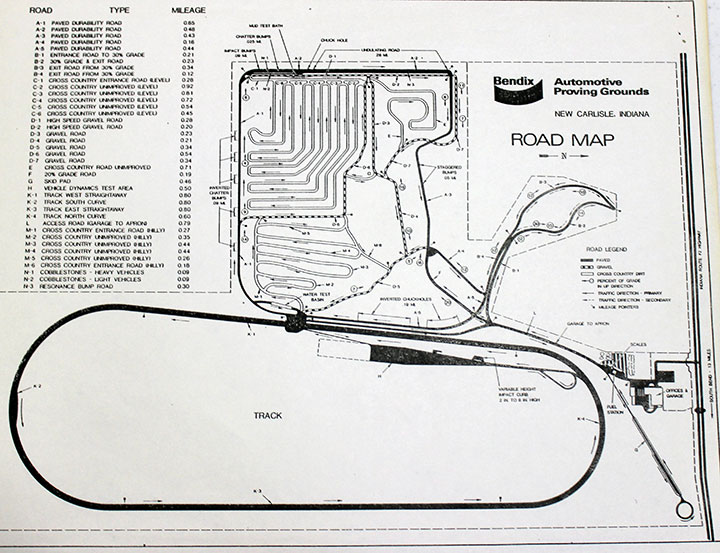
This Bendix-era drawing shows the layout of
the Proving Ground. SR 2 and due north are along the right.
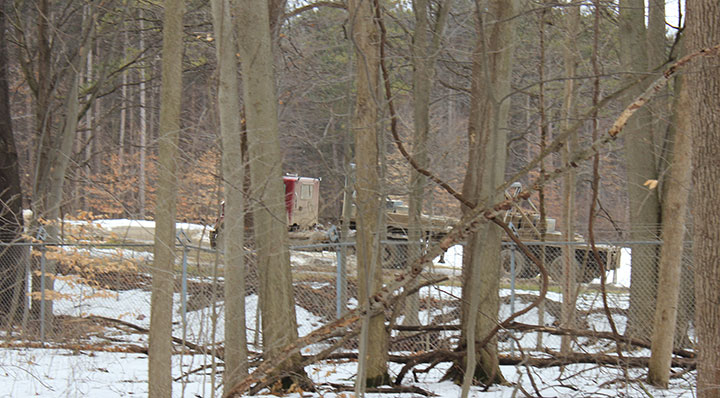
This photo, taken from the park, shows
a semi undergoing testing. Author's photo.
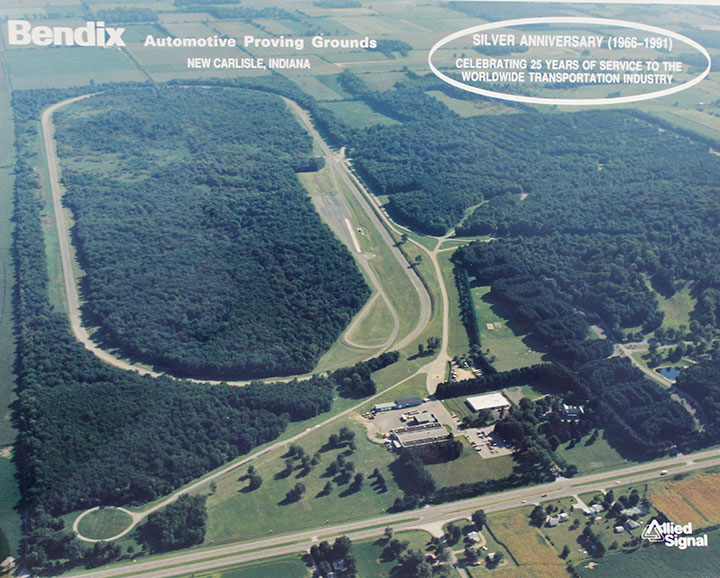
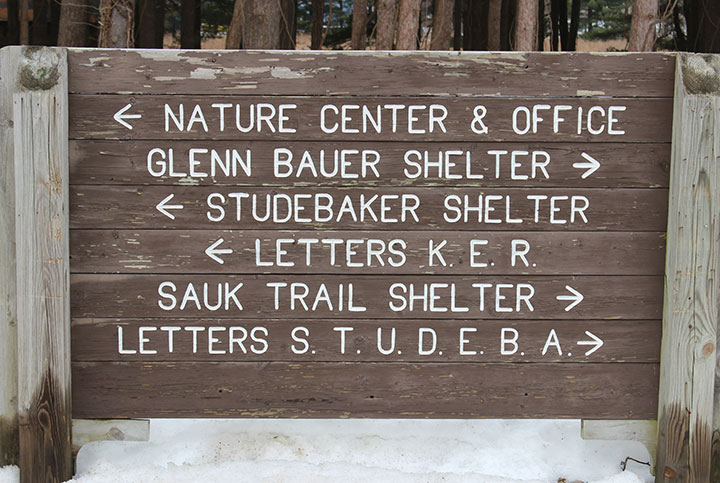
This sign in the park gives directions where
one can look at the different grove of trees that spell out
"Studebaker". Author's photo.
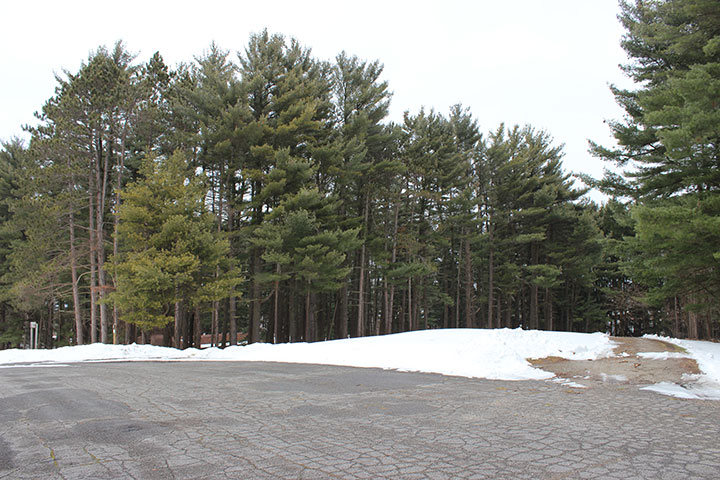
To the left is the letter "K", with "A" on
the far right. Author's photo.
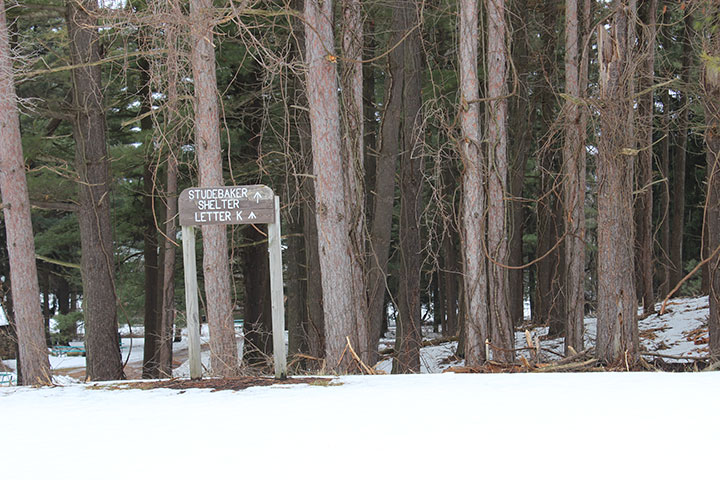
Author's photo.
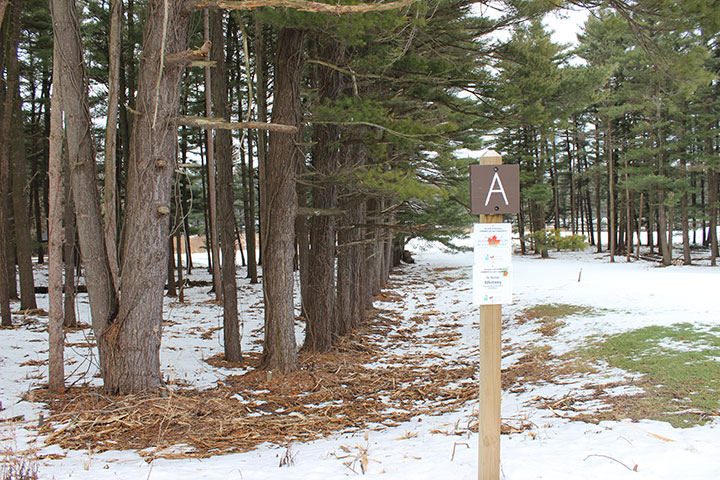
"A" is on the left and "B" to the far right.
Author's photo.
The Proving Grounds, when
operated under contract from the Army, tested trucks, halftracks, tank
recovery vehicles, cargo carriers, scout cars, armored cars, and
experimental vehicles.
Known vehicles tested:
Autocar M3 and M16 halftracks, Dodge WC-52, Chevrolet 1-1/2 ton trucks,
Reo 2-1/2 ton 6x6, International M426 5-ton truck, Mack NM-6 6-ton
truck, Mack NO-6 7-1/2 ton truck, Diamond T 981 12 ton truck, and Bantam
1/4 ton trailer.
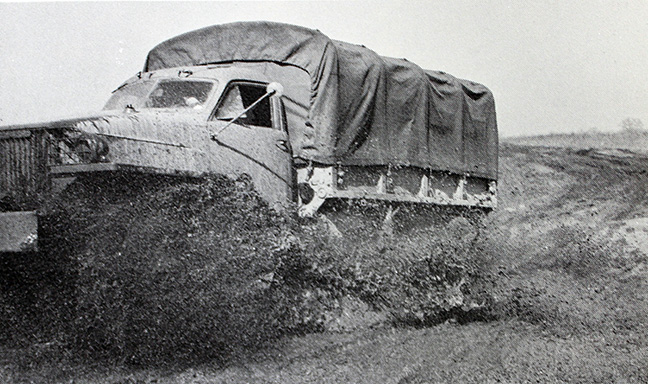
Here is a World War Two-era photo of a South Bend
Studebaker-built US6 6x6 2-1/2-ton truck undergoing testing at the
Proving Ground. Photo added 2-12-2015.

US6 trucks undergo oil consumption
testing at the Proving Ground in 1943. Photo added 2-12-2015.
Below are a few
contemporary photos of vehicles tested at the Studebaker Proving Ground
during World War Two.
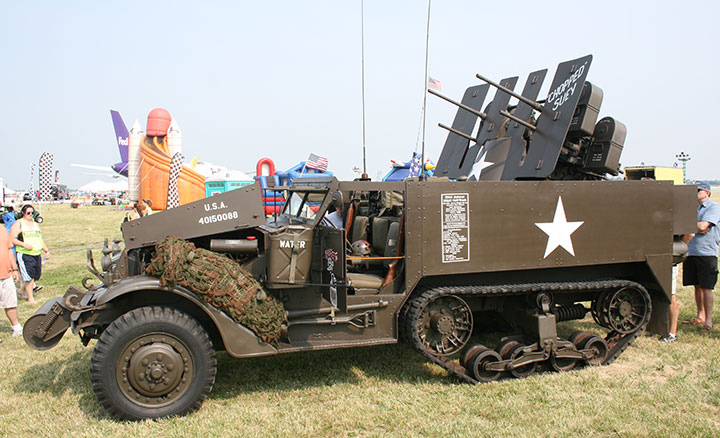
An Autocar M16 halftrack, like one tested at
the Proving Ground. Author's photo.
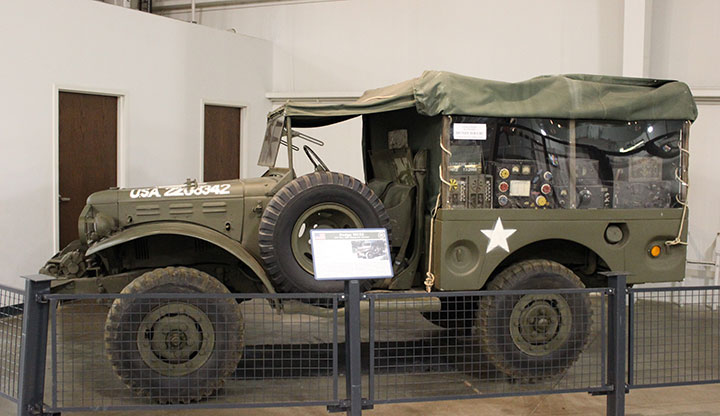
A Dodge WC-52. Author's photo.
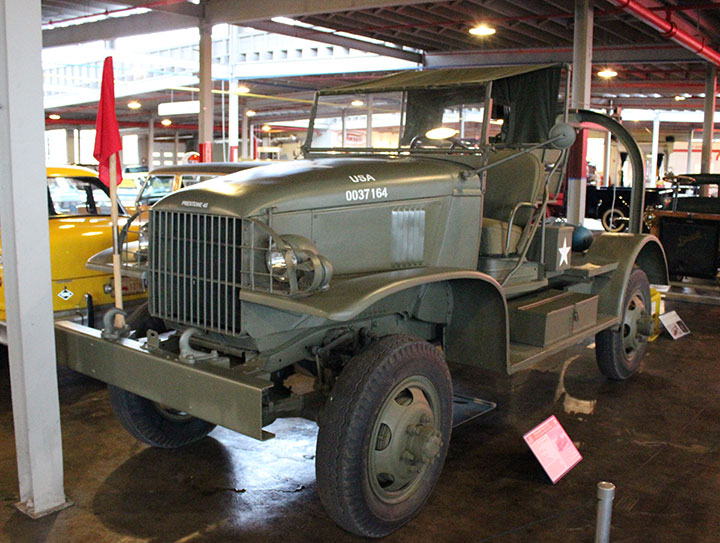
Chevrolet 1-1/2-ton bomb trucks were
specifically one of the several types of Chevy trucks tested
by the military at the Proving Ground. Author's photo.
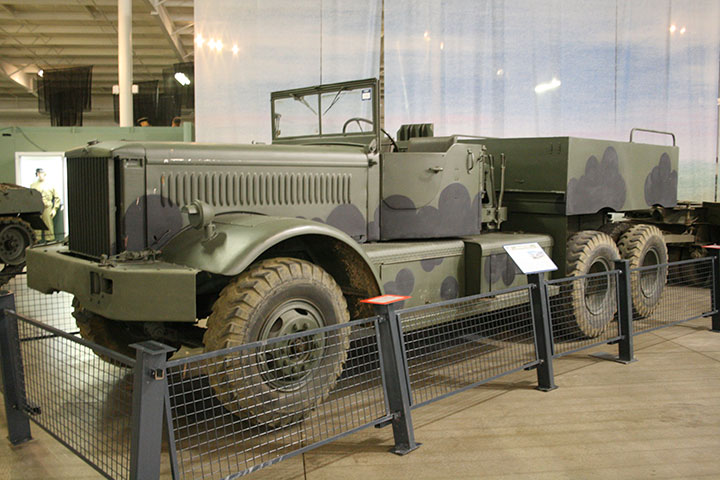
Diamond T 12-ton trucks were tested at the
Proving Ground also. Author's photo.
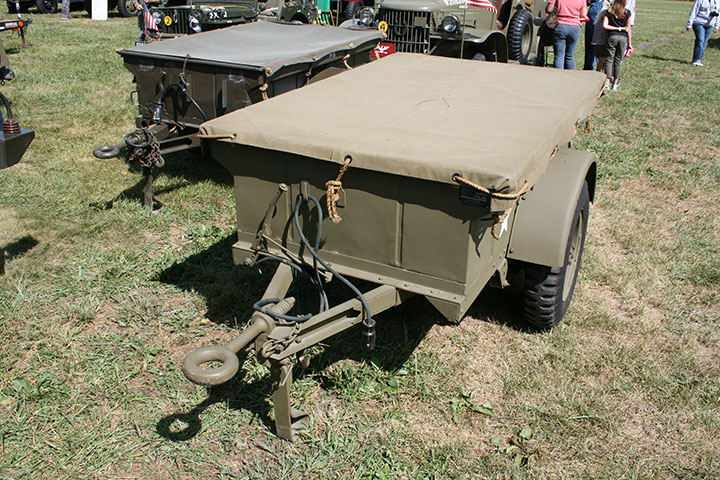
American Bantam 1/4-ton trailers like this
one were tested at the Proving Ground between 1943 and 1945.
Author's photo.
|


















